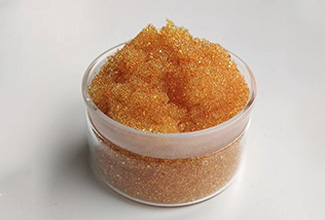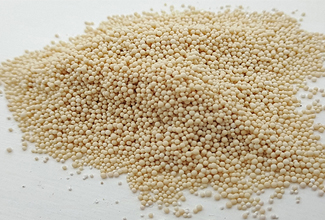Ion Exchange Resin storage and transportation
In the long-term storage of ion exchange resin, if it needs to be stored for a long time in the deactivated equipment, the strong resin (strong acid resin and strong base resin) should be converted into salt type, and the weak resin (weak acid and weak base resin) can be converted into salt type. For the corresponding hydrogen form or free amine form, it can also be converted into a salt form to keep the resin performance stable, and then soaked in clean water. If the decommissioned equipment needs to be drained, it should be sealed and stored to prevent the loss of moisture from the resin.

The ion exchange resin contains a certain amount of balanced water, which should be kept moist during storage and transportation to prevent dehydration. The resin should be stored indoors or covered, and the ambient temperature should be 5℃~40℃. The bagged resin should avoid direct sunlight and keep away from heating devices such as boilers and heaters to avoid dehydration. If it is found that the resin has been dehydrated, do not put the resin directly in the water, so as to avoid the dry resin swelled sharply in water and broken. According to the degree of dehydration, slowly add about 10% salt water to the resin, and gradually dilute it with clean water after soaking for several hours.
When the ambient temperature is 0°C or below, in order to prevent the resin from cracking due to the freezing of the internal water, insulation measures should be taken, or the resin should be stored in a corresponding concentration of salt water according to the temperature conditions to prevent freezing. If the resin is found to be frozen, it should be slowly thawed naturally, and no mechanical force can be applied to the resin.
For the resin placed in the exchanger after long-term deactivation, in order to prevent irreversible contamination of the resin by microorganisms (such as algae, bacteria, etc.), the resin must be thoroughly backwashed before deactivation to remove suspended substances accumulated during operation, and pay attention to rinse and change water regularly.

The ion exchange resin contains a certain amount of balanced water, which should be kept moist during storage and transportation to prevent dehydration. The resin should be stored indoors or covered, and the ambient temperature should be 5℃~40℃. The bagged resin should avoid direct sunlight and keep away from heating devices such as boilers and heaters to avoid dehydration. If it is found that the resin has been dehydrated, do not put the resin directly in the water, so as to avoid the dry resin swelled sharply in water and broken. According to the degree of dehydration, slowly add about 10% salt water to the resin, and gradually dilute it with clean water after soaking for several hours.
When the ambient temperature is 0°C or below, in order to prevent the resin from cracking due to the freezing of the internal water, insulation measures should be taken, or the resin should be stored in a corresponding concentration of salt water according to the temperature conditions to prevent freezing. If the resin is found to be frozen, it should be slowly thawed naturally, and no mechanical force can be applied to the resin.
For the resin placed in the exchanger after long-term deactivation, in order to prevent irreversible contamination of the resin by microorganisms (such as algae, bacteria, etc.), the resin must be thoroughly backwashed before deactivation to remove suspended substances accumulated during operation, and pay attention to rinse and change water regularly.
Last One :
Next Article :
Related Products
-
 C010FG Food Grade Drug Purification Exchange ResinAppearance: Claybank to tan transparent spherical particle.The degree of crosslinking : 10%.Ionic form:Na+
C010FG Food Grade Drug Purification Exchange ResinAppearance: Claybank to tan transparent spherical particle.The degree of crosslinking : 10%.Ionic form:Na+ -
.png) Cation Polyacrylamide ResinPurity : 99.9%Color : off-whiteQuality Control : Each Lot of Cationic Polyacrylamide was tested successfully
Cation Polyacrylamide ResinPurity : 99.9%Color : off-whiteQuality Control : Each Lot of Cationic Polyacrylamide was tested successfully -
 Macroporous Weak Acid Chelating Resin for Cobalt Removal Copper Removal Nickel Removal Zinc Removal ResinEquivalent foreign models: Puromet MTS9301Appearance: Spherical BeadsIonic Form: Na+ form
Macroporous Weak Acid Chelating Resin for Cobalt Removal Copper Removal Nickel Removal Zinc Removal ResinEquivalent foreign models: Puromet MTS9301Appearance: Spherical BeadsIonic Form: Na+ form
Message

